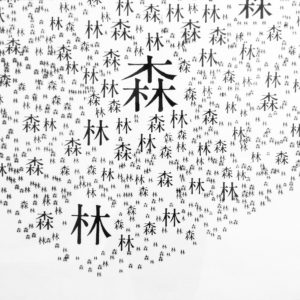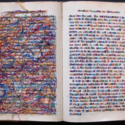Metaphors are a means through which human thought is structured. Indeed, recent work in cognitive science suggests that all human thought proceeds through metaphor. As such, it is unsurprising that metaphor has been an important part of the rhetorician’s toolkit since Aristotle. I contend that, to see the importance of documentation studies in modern life, we can employ metaphor.
A quick definition: “Metaphor” comes from the Greek meaning “to transfer.” Commensurately, metaphor brings an expression or concept from one domain to another in order to render something in the target domain more understandable.

The metaphor I want to discuss is the concept of the “three perfections” from pre-modern China. For much of China’s history, the art of calligraphy was considered an elite intellectual and artistic achievement. Poetry and painting were also practiced, but largely in isolation. In the Tang Dynasty (618–907 A.D.), poets, calligraphers and painters began collaborating on works. These three pursuits became entangled, and even circularly defined: Painting was regarded as silent poetry, poetry was regarded as the painting of sound or the voice of thought, and calligraphy was regarded as the exteriorization of thought—three perfections. With any one of the three missing, a piece was considered incomplete, imperfect.
Philosophically, the three perfections embody the virtue expressed in the Tao Te Ching to “return to the simplicity of the uncarved block.” Considered in the modern Western context, this conceptualization challenges our penchant for separating mind and body and constructing other dualisms.
I suggest that the document, as conceptualized in neo-documentation studies, embodies the three perfections. Documents are physical (viz. painting), they are manifestations of human thought (viz. calligraphy), and they engage social discourse (viz. poetry). (Granted, in practice the three cannot be disentangled so cleanly.) Moreover, the image of the three perfections encourages us to reflect on the many hands that go into creating any single document.
We are familiar with Lund’s tripartite conceptualization of documents as physical, mental and social (cf. Buckland’s technological, meaningful and sociocultural). (As an aside, it’s worth noting that this conceptualization was developed using a metaphor from physics.) The three perfections present an alternative, but somewhat synergistic, view: We are invited to attempt to map each of the three perfections onto Lund’s three concepts, which is an opportunity for self-reflection within our field.
The concept of the three perfections can help us better understand how and why the document perspective is indispensable today. For example, we can consider the recent phenomenon of fake news. Those who create fake news exploit the modern disregard for the material aspects of the news, which has become possible from the widespread application of data/computing metaphors to documents in the modern day. As philosopher of information technology Michael Heim wrote in the 1980s: “In the psychic framework of word processing, text is increasingly experienced as data.” Those who unwittingly spread fake news have fallen prey to this situation.
Perhaps we can fight metaphors with metaphors.
The document perspective encourages use to take a holistic view on the world. To date, this discourse has been taking place in a small corner of the academic community. Using metaphor to emphasize the reality of the three perfections (which could be considered an expansion of WJT Mitchell’s concept of imagetext) will make the document perspective more accessible to all, and it may help us overcome these societal issues. In a simple way, it promotes basic literacy for today’s online citizenry. It may dash our boundaries and heal divisions—but at the very least, we’ll see the world as a more complete place.
 Follow
Follow

